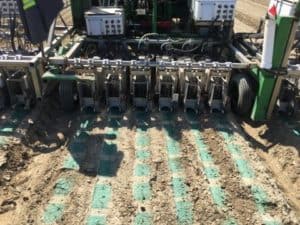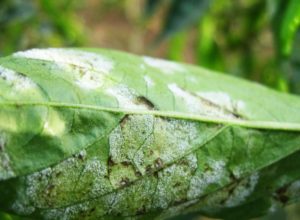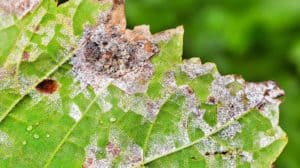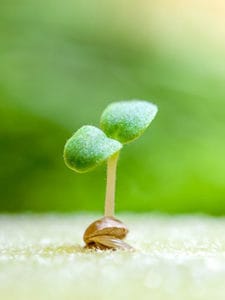Liquid fertilizer for Plants will Help you Grow Bigger and Healthier
SNS Grow, Micro and Bloom fertilizers.
Made with all-natural botanicals. Safe around kids and pets.
Concentrated Products
You May Also Be Interested In
Natural Pesticides | Natural Fungicide | Weed Killer | Hydroponic Nutrients | Disinfectants | SNS Blog
Liquid Fertilizer
After using too much chemical fertilizer over a long period of time, soil can become exhausted, making it hard to support agricultural production. To enlighten farmers and gardeners on the best practices for maximum plants production, Sierra Natural Science has provided the following information regarding liquid fertilizer and why it’s one of the best options for this century of agriculture.
What is Liquid Fertilizer?
Understanding Key Concepts
Liquid fertilizer refer to extracts of soluble powders or chemicals that have a mix of nitrogen, phosphorus, and potassium. They may also have wetting agents, insecticides, weed killers, and fungicides, not to mention trace elements and other supplements designed to help plants grow.
Examples of liquid fertilizer components are grow nutrients that contain anhydrous liquid ammonia, ammoniates, nitrogenous fertilizers, and aqueous ammonia. Complete liquid fertilizer products from Sierra Natural Science include Perfect Mix Bloom Formula. SNS also offers complex fertilizers with potassium, phosphorus, and nitrogen.
There are various types of liquid fertilizer. These fertilizers include:
- Anhydrous liquid ammonia
- Nitrogenous fertilizers
- Ammoniates
- Urea
- Concentrated solutions of ammonium nitrate and urea
- Aqueous ammonia
In addition, there are complex fertilizers consisting of two or three essential plant food elements in various strategic proportions. They formulations differ depending on the stage of the plant’s life cycle. For example, bloom nutrients have more Potassium than Nitrogen. The key elements under this category include:
- Potassium
- Phosphorus
- Nitrogen
The nitrogenous liquid is something that came into the market only in the past few decades. Fertilizers using these substances have been around since 1956. By the end of 1969, more than five million tons of various forms of liquid fertilizer had already benefited farmers. The use of complex liquid fertilizer complete with micro nutrients and its industrial manufacturing started in 1966.
When SNS created their own proprietary blend, Perfect Mix Grow Formula, many important factors were considered. All of the components of this product were designed to maximize yields and reduce growing costs, while simultaneously reducing the impact on the growing environment.
Sierra Natural Science’s knowledge concerning the making and use of fertilizers is broad, thanks to their research experts who have invested over a decade in studying the usage of these fertilizers at home and abroad. For instance, in the USA farmers apply 10% of the complex fertilizers and 50% of nitrogenous variations as liquids. Whereas outside the U.S., these fertilizers are used less frequently. But overall the use of fertilizers has achieved mass adoption in most of the developed countries such as:
- Denmark
- Czechoslovakia
- USA
- France
- Canada
- Great Britain
Regardless of whether the fertilizer in question is nitrogenous or complex, choosing the liquid version is one the best options for those looking for maximum benefits.
The nitrogenous liquid fertilizer SNS offers consists of various essential components that will help all plants grow fast, strong and healthy.
Liquid Fertilizer Contains This Primary Element
In some cases, liquid nitrogen occurs in the form of ammonia (NH3). The ammonia in the liquid fertilizer bonds firmly with the soil particles. With such firmness, it’s quite difficult for melted snow, water or rain to wash away the fertilizer.
The firm contact between the compact soil particles and the nutrients from the liquid fertilizer allows for flexibility of the fertilizer application. Since it’s hard for it to be washed away with rainwater, one can either apply the liquid fertilizer in the summer or winter, depending on the season they prefer.
Ideally, liquid fertilizer is best for a soil depth between 10 and 12cm. For the anhydrous liquid ammonia, one needs to introduce it into a depth of 15-20 cm and adjust accordingly based on the mechanical hardness state of the soil.
Urea and ammonium nitrate solutions don’t contain ammonia. So you need to put them in the top dressing and later spray them over the surface of the soil. SNS liquid fertilizer such as Micro Mix Micronutrient Formula bases its formulas in terms of nitrogen, and they’re the same as those of solid nitrogenous fertilizers.
For the storage of ammonites, they use stainless steel materials, plastics, aluminum, or other vessels with anti-corrosion coating. The nitrogenous liquefied fertilizers are considerably much more affordable than the solid ones. The application of nitrogen fertilizers requires less labor, which minimizes cost in the long run.
As mentioned earlier, fertilizers can either be nitrogenous or complex.
But how complex are these fertilizers?
A complex liquid fertilizer is an aqueous solution containing approximately 27% potassium, nitrogen, and phosphorus.
Some liquid fertilizer companies offer complex fertilizers with some stabilizing additives. Liquid fertilizer additives include:
- Colloidal clay
- Bentonite
These additives can play a critical role in preventing fertilizer crystallization. It is believed that these preventive additives make it easier for users to increase the food substance concentration in the liquid fertilizer for up to 40%. Sierra Natural Science is organic liquid fertilizer supplier who does not use clay and bentonite.
Complex liquid fertilizer lack free nitrogen. To compensate for this, growers and farmers often apply them on the surface while ploughing, hallowing, cultivating, or even during sowing using a drill row.
Fertilizing Guide: How You Can Make Homemade Solutions
One can make homemade fertilizers from free natural ingredients. Such ingredients include:
- Animal or human urine
- Seaweed
- Chicken manure
- Grass clippings
The perfect combination of these natural ingredients is good enough to give the plant the quickest nutrient boost they need for more substantial and more productive growth.
Why and When to Use These Products
People don’t just use liquids for the sake of using them. Fertilizers act super-fast compared to granular products. The fast rate of absorption makes them ideal for crop tendering purposes. Following are some of the reasons why one should use fertilizers on their plants.
- Once the seedlings use up the nutrients from the sprouted seeds, they start to benefit from little amounts of fertilizers in the soil. This is applicable if one is using a peat-based mix or any other soilless seed starter mix. These mixes provide only a limited supply of nutrients alongside preventing the dumping off of the essential elements.
- Fertilizers are also beneficial for the success of container-grown seedlings. These seedlings entirely depend on their gardeners for nearly everything including:
- Nutrients
- Moisture
- Light
- Proper air circulation
They do pretty well with constant light feedings from fertilizers.
How to Achieve the Best Results
When one chooses between dry fertilizer and organic liquid fertilizer, the first consideration is the nutrients’ absorption rate. Organic fertilizer occurring in dry form needs to get into the soil for absorption by the roots. The roots then transport them to the stem, leaves, and flowers. In such form, the nutrient intake is very slow, and the absorption process may last between 12 days to 3 weeks, with some lasting over 12 weeks based on the type of fertilizer and other growing conditions such as pH. Soil temperatures and water intake through the particular types of plants are also some of the critical factors that slow down the rate of intake of dry fertilizer from the crops.
Getting the Best Results:
- Spray the plant using a water can, especially if one is using the liquid as a foliar feed.
- Sprinkle the liquids over the plant to make the nutrients available on the plant side. By doing so, the plant starts to absorb the nutrients almost immediately.
- When spraying the liquids directly with a fertigation system, the plants absorb the nutrients via the roots. However, the rate of nutrient intake is higher than in organic granular fertilizer. To ensure maximum results, one will need to dilute the organic liquid fertilizer first, as its concentration is relatively high.
- If you choose to use organic liquid fertilizer as a foliar feed, you should spray it when the day is chilly to prevent leaf sun-scald. The most appropriate time to spray is early in the mornings, late afternoons, or overcast days.
- For best results, spray the plants daily.

What Product is Right For the Orchard Or Vineyard?
Proper nutrition is essential for orchards and vineyards. Figuring out the best liquid fertilizer for the vineyard needs is sometimes challenging. This is because the vineyard or orchard may have various plants whose nutrient requirements are different. Before selecting a liquid fertilizer product, it’s important to sample your soil pH level as well as the leaves of the plants in an orchard.
As liquid fertilizer application experts, SNS understands how important garden analysis methods can be. Sierra Natural Science recommends that farmers and gardeners use several soil and leaf sampling methods to get a better idea of how their crops are performing. These can be used to investigate and assess the nutrient status of their soil. This will, in turn, help them to make sound nutrient management decisions. Some of the primary assessment methods include:
- Leaf analysis
- Fruitlet mineral analysis
- Soil sampling/analysis
Leaf Analysis
This is the best technique to determine the nutrient status of the minerals in the fruit trees. The only limitation to leaf analysis is the possible contamination during foliar spraying. To minimize this contamination, you should complete most foliar sprays by June and collect leaf samples during the growing season. The only exceptions to this are calcium and zinc, as they don’t easily wash off the leaves. It’s challenging to monitor the calcium levels for fruit qualities using leaf samples.
It’s important to take caution when applying pesticides in an attempt to eliminate pests from the orchard or vineyard. Some pesticides contain nutrients. For instance, Cumulus contains Sulphur, while Ziram is rich in zinc. If such pesticides land on the leaves, samples shouldn’t be taken from such leaves. In that case, the results for those nutrients become invalid.

Sampling/Analysis
Soil analysis is the best ideal for determining the pH (acidity or alkalinity) of the soil. It also allows for the determination of soil salts as electrical conductivity and boron element. Analyzing the soil at the end of the season showing high nitrogen levels can indicate excess nitrogen fertilizer application.
Analyzing the soil isn’t a reliable way of determining the other mineral requirements in orchards and vineyard plants. Some nutrients, such as calcium or phosphorus may be present in the soil, but it doesn’t mean that these nutrients are available for the plant.
Fruitlet Mineral Analysis
Just like a leaf and soil analysis, the fruitlet analysis can be valuable in determining the feeding programs in orchards. Since the concentration of various minerals in fruits is correlated with certain quality aspects in some fruits, fruitlet analysis results can be essential in guiding towards the selection of the best liquid fertilizer for an orchard.
Contrary to leaf analysis, there are no standard sampling techniques for fruitlets analysis. The optimum mineral levels of fruitlets differ by:
- Sample collection timing
- Variety
- Preparation
- Analysis techniques
There are various mineral nutrients which need to be present in universal fertilizers when applying in orchards and vineyards. Such mineral nutrients include:
- Boron
- Calcium
- Copper
- Iron
- Magnesium
- Manganese
- Nitrogen
- Phosphorus
- Potassium
Out of all the above minerals, nitrogen is the primary element for all nitrogenous fertilizers for vineyards and fruit trees.
The most appropriate liquids for vineyards and orchards include:
- Potassium chloride
- Potassium nitrate
- Potassium magnesium sulfate
- Potassium sulfate
- Calcium nitrate
- Urea
- Calcium ammonium nitrate
- Liquid blend

Benefits
Organic liquid fertilizer comes with multiple benefits. Apart from saving money, Sierra Natural Science fertilizers are environmentally friendly. Liquid fertilizer doesn’t support scurrilous chemical industries that mine and pillage the environment for their raw materials.
Precisely, fertilizers:
- Have fair pricing
- Are environmental friendly
- Require little labor
Nutrition and Nutrient Uptake in Soilless Culture Systems
In soilless culture systems, nutrition and nutrient uptake occur in solution forms where nutrients are supplied to the plants to meet their demands. The nutrients and minerals dissolve in water to form solutions containing ions of the respective nutrients. There have been many compositions of these nutrient solutions. One should be keen to choose these nutrient compositions based on the kind of plants, target quality of the plant product, and the growth stage of the plant. The only difference here is the concentration and the proportion of each ion in the solution.
Sierra Natural Science offers innovative fertilizers that not only work well for crops but also save farmers and home growers time and money. SNS experts have analyzed the liquid fertilizer advantages over dry fertilizers and there is a need for change to create more sustainable growing methods.

Why should you trust SNS for your garden?
- Customized and eco-friendly packaging for all products
- High liquid NPKs standards
- Excellent follistim range
- Innovative fertilizers with essential nutrients and microorganisms
- Free shipping on qualified orders
- Conservation tillage and ecological approach to soil management
Try out the SNS liquid fertilizer product line and boost your yields. If you need pest control, check out our products.
Contact Sierra Natural Science today for a free consultation!
FAQs
What is this product used for in the garden?
Liquid fertilizer serves as foliar feeding, hydroponic applications or general use on farms and greenhouse growing operations. When used as a foliar feed, it’s generally sprayed using a water can or a sprayer, sprinkling the liquids over the plant and its entire parts. This makes the nutrients available for absorption by the roots almost immediately. When using a sprayer to apply the fertilizer to leaves, plants absorb nutrients through the leaves rather than the roots.
Can I turn a granular product into something else?
Yes! This is indeed simple. One only needs to soak the granular organic fertilizer in warm water and stir thoroughly. Allow it to sit in water for 24 hours and strain out any remaining particulates. Use the strained liquid as a fertilizer.
Liquid Fertilizer return to top
Third Party Content Disclaimer
Some of the information on this Web page has been provided by external sources. The provision of Third Party Content is for general informational purposes only and does not constitute as a recommendation for alternatives. The Third Party Content provided on this web page is obtained from sources believed to be reliable. Sierra Natural Science is not responsible for the accuracy or reliability of the information supplied by the external sources, and no guarantees are made by Sierra Natural Science or the providers of the Third Party Content as to its accuracy, completeness, timeliness.

